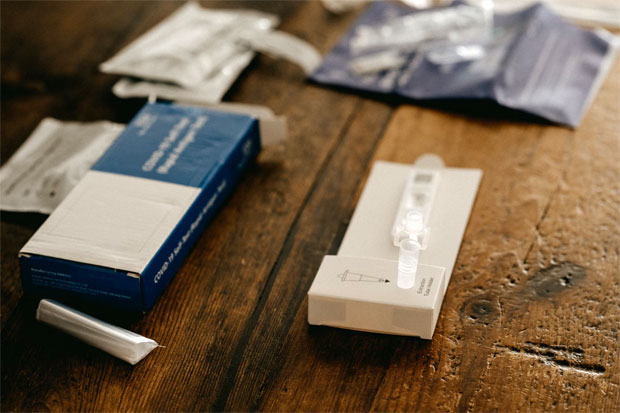The Science Behind Lateral Flow Tests: How They Detect COVID-19

The Science Behind Lateral Flow Tests: How They Detect COVID-19
Accurate testing continues to be one of the best ways in the endless fight against COVID-19. The world becomes safer when practiced alongside other means of forging war against the virus, such as vaccination.
The art of testing has continued to evolve, and convenience is essential for effective COVID detection. COVID tests today are more accessible and convenient, thanks to the lateral flow tests that occur from any location.
In this article, we take you through precisely how lateral flow tests detect COVID-19 and how they have managed to keep the world safe by remaining convenient and reliable. cop
Lateral Flow Tests Explained
Lateral flow tests detect specific substances in a sample, such as saliva and urine. Lateral flow test (LTFs) is also known as lateral flow assay, lateral flow device, express test, quick test, or dipstick.
COVID-19 still lurks in the UK, with more than 12,000 new infections in England in September 2023. Hence, testing is still essential, especially in areas of high risk. It is even more vital to have convenient means to detect the virus.
LTFs are convenient and accessible, making them an effective way to fight COVID-19 through early detection. Also, the tests are easy to use, making them an excellent option for personalized testing from home.
How Do Lateral Flow Tests Detect COVID-19?
Lateral flow tests have been instrumental in detecting COVID-19. They play an incredible role in convenient testing. Here’s how LTFs work:
- Sample
Lateral flow tests require a sample to work. The commonly used specimen for a COVID-19 LFT is saliva, throat, or nose swab. After sample collection, it mixes with the buffer solution for test preparation.
Note that the sample collection is a vital step and plays a significant role in the effectiveness of the lateral flow test. Hence, there should be careful sample collection to avoid contamination, leading to inaccurate results.
- The Test
The lateral flow test strip contains the sample application pad, a component that receives the sample. The test also has a conjugate pad with small particles coated with antibodies specific for detecting the SARS-CoV-2 virus. The particles in the conjugate place bind the COVID-19 virus if present.
Another component with antibodies in the lateral flow test is the test line. The test line contains unique antibodies and plays a role in detecting the virus.
Lateral flow tests have a control line that ensures accuracy and effectiveness. The control line has unique antibodies that provide the test to detect the presence or absence of COVID-19 without errors.
- Detecting COVID-19
Once the sample is on the application pad, it flows towards the test lines. If there is presence of COVID-19, the antigens bind with the gold nanoparticles in the conjugate place. When the sample flows to the test line, the viral antibody nanoparticle complexes from the conjugate pad bind with antibodies in the test line if the virus is present. The binding forms a visible sign, thus detecting COVID-19.
The control line must always be visible, regardless of whether the virus is present. Hence, if the test does not show the control line, it is considered invalid.
- How Long Does It Take To Detect the Virus?
One of the main advantages of lateral flow tests is how fast they can detect COVID-19. The exact time of detection can vary according to the type of test. However, lateral flow tests typically take 15-30 minutes to see the virus. Compared to other tests, such as PCR lateral flow tests, it takes a significantly shorter period to test for COVID-19.
Lateral Flow Test Sensitivity
Sensitivity is the capacity of a test to identify individuals with an infection. The issue of lateral flow test sensitivity varies depending on a few factors. While lateral flow tests are relatively less sensitive than COVID-19 tests such as PCR, they can detect the virus accurately.
Lateral flow tests are most sensitive when the viral shedding is at the pick; they can easily detect the virus during the selection of shedding instead of during the beginning of the infection. Therefore, doing a LFT a few days after the onset of COVID-19 symptoms is better.
The test kit also influences the test sensitivity. Therefore, it is advisable to use test kits from reputable brands to acquire the most accurate results. Before buying the test kit, you can check customer reviews from online platforms to understand how well the kit brand performs.
Another influencing factor on LFT sensitivity is the handling of the sample. The improper handling or collection of the sample can lead to inaccurate results. Therefore, following the test kit instructions when collecting the model is essential to enhance the test sensitivity.
Follow Up After a Positive LFT
If you get a positive COVID LFT, you should avoid contact with others. In addition, it is essential to report the results. Also, if you have unmanageable symptoms, ensure you get health care attention immediately. You can also do a follow-up PCR test to confirm the positive LFT.
Guest Article.





